
Filter News
Area of Research
- (-) Energy Science (106)
- (-) Fuel Cycle Science and Technology (1)
- (-) Materials for Computing (11)
- Advanced Manufacturing (5)
- Biology and Environment (30)
- Computational Biology (1)
- Computational Engineering (2)
- Computer Science (5)
- Fusion and Fission (30)
- Fusion Energy (10)
- Isotope Development and Production (1)
- Isotopes (27)
- Materials (79)
- Mathematics (1)
- National Security (37)
- Neutron Science (125)
- Nuclear Science and Technology (41)
- Nuclear Systems Modeling, Simulation and Validation (1)
- Quantum information Science (2)
- Sensors and Controls (1)
- Supercomputing (54)
- Transportation Systems (2)
News Topics
- (-) Big Data (5)
- (-) Clean Water (8)
- (-) Cybersecurity (8)
- (-) Isotopes (2)
- (-) Neutron Science (16)
- (-) Nuclear Energy (8)
- (-) Security (7)
- (-) Transportation (68)
- 3-D Printing/Advanced Manufacturing (81)
- Advanced Reactors (6)
- Artificial Intelligence (8)
- Bioenergy (26)
- Biology (11)
- Biomedical (7)
- Biotechnology (4)
- Buildings (38)
- Chemical Sciences (18)
- Composites (17)
- Computer Science (30)
- Coronavirus (15)
- Critical Materials (9)
- Energy Storage (71)
- Environment (54)
- Exascale Computing (2)
- Fossil Energy (2)
- Frontier (2)
- Fusion (1)
- Grid (39)
- High-Performance Computing (6)
- Hydropower (3)
- Machine Learning (7)
- Materials (43)
- Materials Science (38)
- Mathematics (2)
- Mercury (3)
- Microelectronics (1)
- Microscopy (12)
- Molten Salt (1)
- Nanotechnology (14)
- National Security (7)
- Partnerships (12)
- Physics (1)
- Polymers (14)
- Quantum Computing (1)
- Quantum Science (5)
- Simulation (4)
- Space Exploration (4)
- Statistics (1)
- Summit (5)
Media Contacts

A team led by the U.S. Department of Energy’s Oak Ridge National Laboratory demonstrated the viability of a “quantum entanglement witness” capable of proving the presence of entanglement between magnetic particles, or spins, in a quantum material.
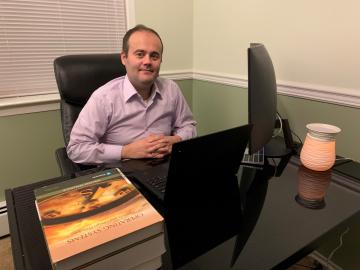
Having co-developed the power electronics behind ORNL’s compact, high-level wireless power technology for automobiles, Erdem Asa is looking to the skies to apply the same breakthrough to aviation.

Oak Ridge National Laboratory researchers developed and demonstrated algorithm-based controls for a hybrid electric bus that yielded up to 30% energy savings compared with existing controls.
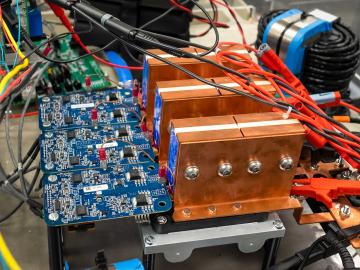
ORNL has licensed its wireless charging technology for electric vehicles to Brooklyn-based HEVO. The system provides the world’s highest power levels in the smallest package and could one day enable electric vehicles to be charged as they are driven at highway speeds.
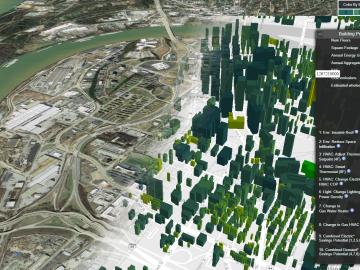
A new tool that simulates the energy profile of every building in America will give homeowners, utilities and companies a quick way to determine energy use and cost-effective retrofits that can reduce energy and carbon emissions.
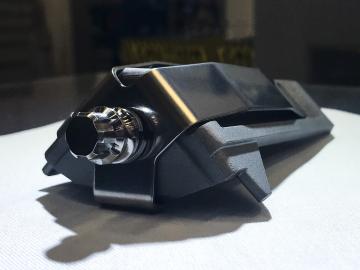
Four first-of-a-kind 3D-printed fuel assembly brackets, produced at the Department of Energy’s Manufacturing Demonstration Facility at Oak Ridge National Laboratory, have been installed and are now under routine operating

Oak Ridge National Laboratory researchers have developed a new catalyst for converting ethanol into C3+ olefins – the chemical

ASM International recently elected three researchers from ORNL as 2021 fellows. Selected were Beth Armstrong and Govindarajan Muralidharan, both from ORNL’s Material Sciences and Technology Division, and Andrew Payzant from the Neutron Scattering Division.

Researchers at Oak Ridge National Laboratory have developed a nationwide modeling tool to help infrastructure planners decide where and when to locate electric vehicle charging stations along interstate highways. The goal is to encourage the adoption of EVs for cross-country travel.
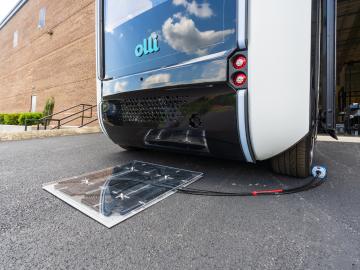
Oak Ridge National Laboratory researchers demonstrated their wireless charging technology on an autonomous electric vehicle for the first time in a project with Local Motors.


